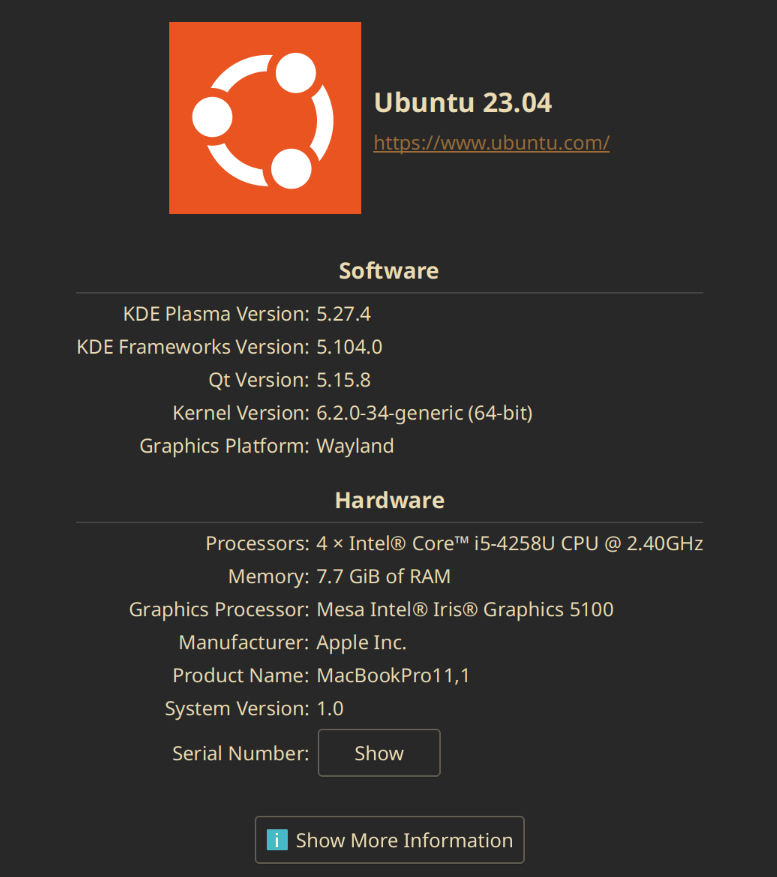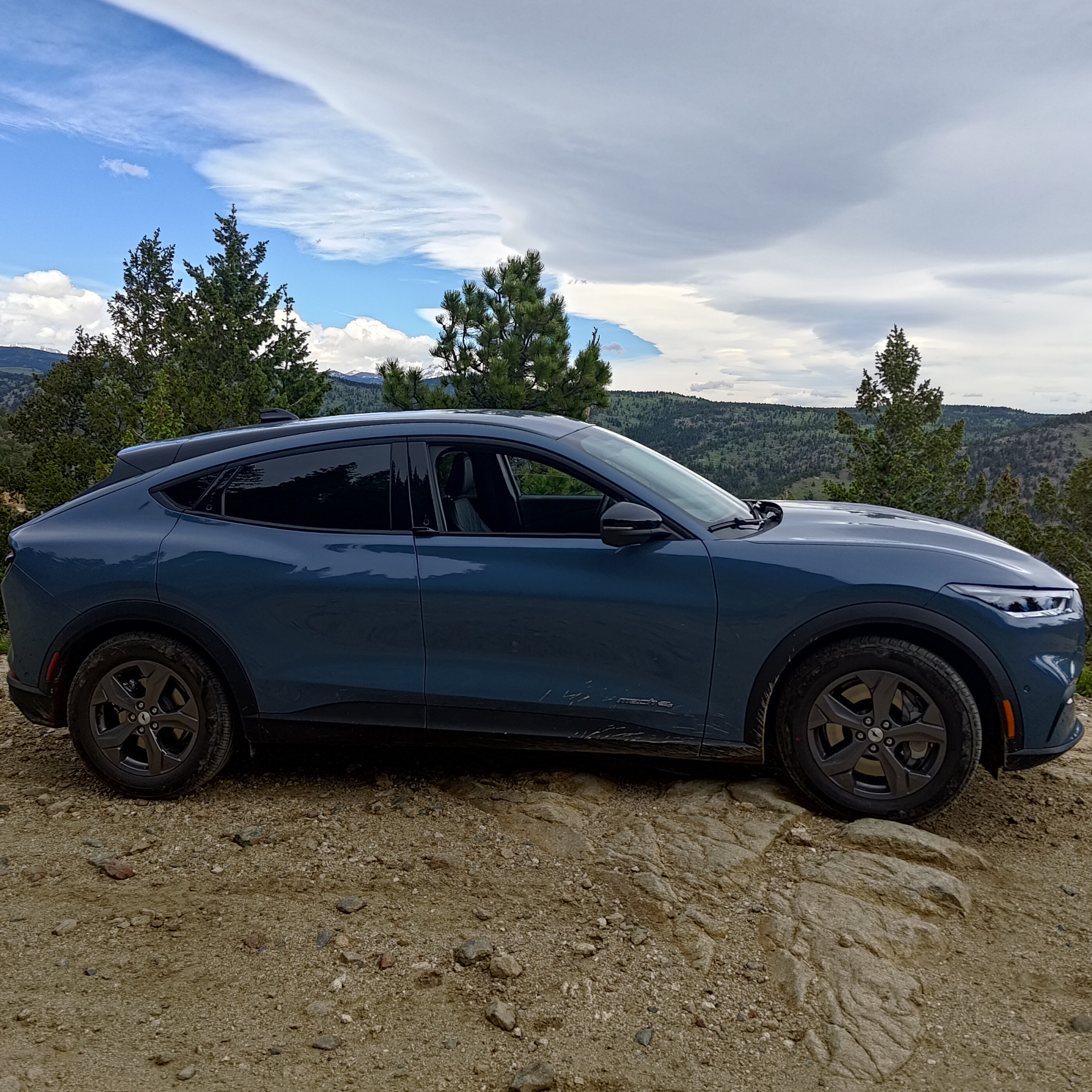Recently I had to return the laptop from my workplace, and was briefly left without a working laptop. Luckily (that’s what I thought at the time), we had a spare old 2013 macbook laying at home with an upgraded battery and a 256 GB SSD. The only problem was – it had MacOS installed. Now, I don’t really have a problem with using MacOS, in fact I had to daily-drive it for the past 8+ years, as most of the time I was using a work-issued laptop, which unsurprisingly ran MacOS. But this time I thought, wouldn’t it be fun to try and install a working Linux distro on this old macbook? I mean, it’s not like I have anything better to do on a weekend, right? What followed was a journey of pain, suffering, surfing 8 years old forum posts, with occasional glimpses of hope and joy, which made the entire experience worth it. Some of the problems I encountered were really Mac-hardware specific, while the others had to do with the rather early stage of Wayland protocol and the HiDPI support in general in Linux (worsened by the disinterest of corporate software developers in spending at least some time on making sure their product works on not-so-widely-used OS-s).
exacurbated
Is that a mashup of exacerbated and masturbated?
They did say they loved it.
At first it was the former, then the latter. )
Did this with an 09 MacBook, installed Debian 12 with XFCE, and everything just worked with no additional setup!
Is it the white unibody MacBook? I have installed LMDE on it and am absolutely satisfied with it so far. Thinking about selling my 2016 Intel MacBook Pro now!
It is!
Apple makes such weird decisions with their hardware sometimes. Like running the trackpad and keyboard off the Bluetooth controller in some models. I think it’s intentional just to make other OSes less compatible sometimes.
In college I was an apple certified tech and I had to replace a hard drive in a MacBook one day. The wireless card was glued to the top of it. No clue why. What was a 6 screw procedure on every other laptop vendor at the time was 20+ screws and 15 minutes of gentle prying on that thing.
I recently did the same with a mid 2013 macbook air. I installed NixOS because I already have a config for my framework laptop. It took maybe 10 minutes to put together the extra lines of config for the macbook air, then 30 minutes of waiting for everything to install, and now I have two laptops with the exact same software and layout. The macbook air doesn’t exactly scream, but it’s a lightweight option for bringing to a coffee shop to write that does its job well, and it was just collecting dust before.
deleted by creator
They actually had hi-res screens 10 years ago? Like I’m 2013? Resolution is 1600. That’s pretty high for a 10 year old laptop
That sounds about right for the first retina MacBooks
Yeah, I believe these were one the first retinas with 200+ ppi. Honestly, for a person who spends most of the time staring at a code or a text, hidpi is basically a necessity for me at this point. So the fact that slack or vscode had such a bad support for fractional scaling is a huge deal for me. (Wayland fixes this in some instances as I mentioned)
Oh, tell me about the hi dpi. I can’t believing that 1080p is actually still a thing in 2023 on laptops. Especially on anything 15" or bigger. It looks like dogshit and I can see every single pixel. Everything in my house is 4K except my two work monitors, and they’re 1080p. I can’t stand them. I think 1080p is ok for gaming, but that’s about it.
What’s the multi monitor support like on mac’s running Linux?
Well in that sense Macs aren’t too different from any other laptop. HDMI worked just fine. I was also trying to connect a USB-C monitor through an HDMI adapter, which didn’t quite work, but I think that might be the case with other laptops too (it’s probably a driver issue). From the desktop experience point of view, KDE handles multi monitor flawlessly, can’t think of any complaints.
I have a late 2011 that I might be interested in doing this to. Any practical advice on avoiding your suffering?
Like the other reply suggests: look up which drivers you got (mainly the wlan, bluetooth and the camera), and see if WL or facetimehd support those. It wasn’t that much of a pain with the drivers though. Also, find out whether you have the “over the internet recovery”. If not, I would probably avoid deleting the recovery partition, and opt for a dual boot (or manual partitioning).
Thanks, I appreciate it! I’m happy for a dual boot and for no camera, so here’s hoping for the rest.
Look up which distros come with drivers/documentation for your hardware (different for many MacBook versions) especially the WiFi/Bluetooth chipset.
Don’t try anything fancy, unless you have a surplus of life energy and time to waste.
Excellent, thankyou! I was just going to throw ubuntu at it unless I really needed something else because of the potato specs, so hopefully drivers are already sorted.
especially the WiFi/Bluetooth chipset
Noted. I would be pissed to not have that working.
Don’t try anything fancy
No chance, I’ve been burnt by my unix arrogance enough times to not want to try it on proprietary hardware. Until now I assumed even getting Linux on there was too fancy, I still remember other people fighting for weeks with their hackintosh a decade ago.
I’ve been burnt by my unix arrogance enough times
Same here, haha. As long as you stay away from ideas like “compiling your kernel from scratch” you’ll be fine.
I recently installed arch on my late 2011 MacBook pro, pretty much everything worked out of the box except wi-fi. The broadcom-wl-dkms driver ended up working the best and without disconnections.
I really recommend it, the performance really surprised me. It’s at the very least 2x faster than MacOS. It really brought life to the laptop, it was unusable before that.
2012 MacBook Pro with an upgraded ssd.
Installed Fedora 38 easily on it with just one line of command for enabling rom fusion to get the WiFi drivers.
2010 MacBook Pro, still runs Arch with ease (back when I set it up I had more time than I do now, would go with a less DIY-ish distro nowadays, probably something Debian based)
The only chore was to get the RTC alarm wake up working, which was a bit hacky.












